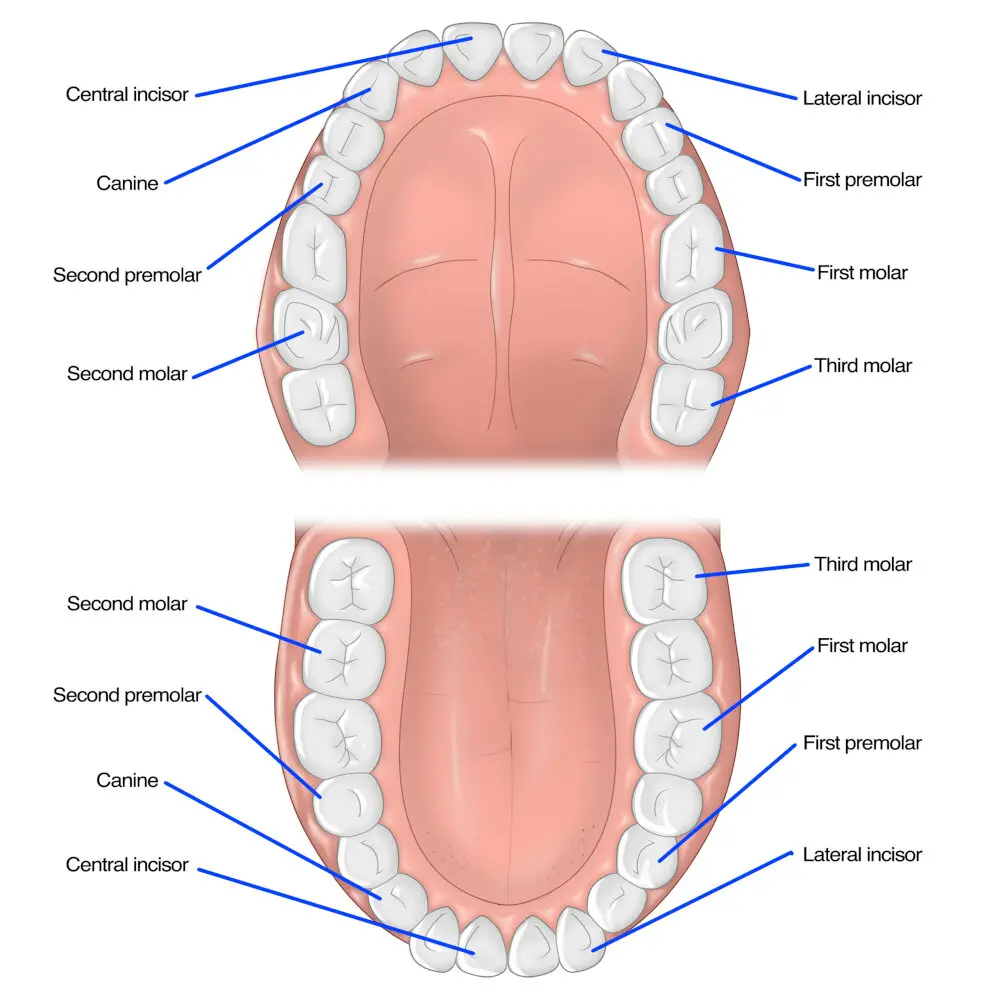Why Do Dogs Show Teeth When Playing? Understanding Canine Behavior

Dogs are one of the most beloved animals in the world, and for good reason. They are loyal, affectionate, and playful creatures that bring joy to countless households. However, even the most well-behaved dogs can exhibit behaviors that may seem alarming or confusing to their owners. One of the behaviors that often raises questions is when dogs show their teeth during playtime. While it may look intimidating, this behavior is actually a natural part of canine behavior, and understanding its significance can help owners better connect with their furry friends. When a dog shows its teeth while playing, it is usually a sign of excitement and enthusiasm rather than aggression. It is a way for them to communicate with their playmate and express their enjoyment of the game. Dogs have a complex system of body language and vocalizations that they use to communicate with each other, and the display of teeth is just one of the many ways they can convey their emotions. However, it is important to understand the context in which this behavior is occurring, as it can also be a sign of aggression or fear in certain situations. By learning to read their dog’s body language and behavior, owners can better understand their needs and provide a safe and comfortable environment for them to thrive.
During playtime, dogs exhibit a range of behaviors that are indicative of their playful and social nature. They may wag their tails, bark, jump, and even show their teeth. While showing teeth can be alarming to some dog owners, it is typically a sign of excitement rather than aggression. When dogs play, they use their mouths to explore their environment and interact with other dogs. This may involve play biting, which can look aggressive but is usually harmless. Dogs also use their teeth to grab and hold toys or engage in tug-of-war games with their human companions. Overall, playtime is an important part of a dog’s socialization and development, and it is important for owners to understand and appreciate their furry friend’s playful behavior.
Understanding canine communication is crucial for anyone who interacts with dogs. Dogs use a variety of body language signals to communicate their feelings and intentions, and it’s essential to be able to interpret these signals accurately. By understanding canine communication, we can avoid misunderstandings and misinterpretations that can lead to aggressive or fearful behavior. For example, when a dog shows its teeth during play, it may not mean aggression but rather a signal of excitement and enjoyment. It’s also essential to recognize the different types of growls dogs use to communicate, as some may indicate fear or aggression while others are playful. Overall, being able to understand canine communication is key to building a strong and positive relationship with dogs.
Types of Play Behavior in Dogs

Play behavior is an essential aspect of a dog’s life, and it’s crucial to understand different types of play to ensure a healthy and safe environment for both the dog and their human companions. The most common types of play behavior in dogs include social play, object play, and self-play. Social play involves interactions between two or more dogs, and it’s characterized by physical activities such as chasing, wrestling, and play-biting. Object play involves playing with toys or other objects, and it’s an excellent way for dogs to engage their minds and exercise their bodies. Self-play, on the other hand, involves a dog playing alone, and it’s an essential behavior that helps a dog to release energy and reduce stress. Each type of play behavior serves a different purpose and can help dogs to improve their physical, cognitive, and emotional well-being. Social play, for instance, helps dogs to learn social skills and improve their coordination, while object play helps dogs to develop problem-solving skills and satisfy their natural instinct to chew and hunt. Self-play, on the other hand, can help dogs to alleviate boredom and reduce anxiety, especially when they are left alone for extended periods. As a dog owner, it’s essential to recognize and encourage different types of play behavior in dogs to ensure they are happy, healthy, and well-adjusted. However, it’s also crucial to monitor play behavior and intervene when necessary to prevent aggressive or dangerous play.
Social play, object play, and play fighting are three common types of play that dogs engage in. Social play involves interactions between dogs, such as chasing, mouthing, and wrestling. It is a way for dogs to practice social skills and communication with each other. Object play involves dogs playing with toys or other objects, such as fetching a ball or chewing on a bone. It gives dogs an outlet for their natural instincts to hunt and chew, as well as providing mental stimulation. Play fighting, also known as roughhousing, is when dogs engage in mock combat with each other, using playful but controlled bites, growls, and body language. This type of play helps dogs practice their physical coordination and can also be a way for them to establish social hierarchy within their group.
Play behavior is a common trait in dogs, and it can be categorized into different types based on their actions. One example of a play behavior is the chase game, where the dog chases a toy or another dog. Another type is the tug-of-war game, where the dog pulls on a rope or toy. Dogs also engage in social play, which involves rolling around, nipping, and mouthing each other without causing harm. Furthermore, play fighting is another type, where dogs engage in mock fights and show their teeth and growl without actually biting. Lastly, dogs may also engage in object play, where they use objects like balls or sticks for entertainment. Understanding these different types of play behavior can help dog owners recognize their pet’s behavior and ensure that it is not mistaken for aggression.
Dogs are social animals that use play to learn and develop their social skills. Play helps dogs understand social cues and develop their communication skills. Through play, dogs learn how to interact with their peers and understand their boundaries. They also learn how to control their impulses and develop self-control. Play provides an opportunity for dogs to practice different behaviors and learn from the consequences of their actions. It also helps build confidence and reduce anxiety in dogs. By engaging in play, dogs can form strong social bonds with their peers, which is essential for their overall well-being. Therefore, play is an essential aspect of a dog’s life and should be encouraged as much as possible.
Why Dogs Show Teeth When Playing

Dogs are social animals, and playing is an essential part of their socialization. When they play, they show their teeth as a way of communicating with other dogs. This behavior is known as a \play face\ or a \play bow.\ It is a sign that the dog is relaxed, happy, and ready to engage in play. When dogs show their teeth while playing, it is a way of expressing excitement and enthusiasm. It is not an aggressive behavior, and it should not be mistaken for a sign of aggression. Dogs that show their teeth while playing are usually wagging their tails and exhibiting other playful behaviors like jumping, running, and chasing. One of the reasons why dogs show their teeth when playing is to signal to other dogs that they are not a threat. Dogs use body language to communicate with each other, and showing teeth is a way of displaying submission and trust. By showing their teeth when playing, dogs are saying, \I am not going to hurt you, and I am willing to be vulnerable with you.\ This behavior helps dogs build relationships with other dogs, and it is a vital part of their socialization. As long as the dogs are exhibiting other playful behaviors and are not showing signs of aggression, showing teeth during play is a healthy and normal behavior for dogs.
When dogs display their teeth, it can be difficult to determine exactly what they are communicating. However, there are several types of canine teeth displays that can provide some insight into their behavior. A relaxed open mouth with teeth slightly exposed is a sign of playfulness and friendliness. A closed mouth with a wrinkled nose and exposed front teeth, on the other hand, is a warning sign that the dog is feeling threatened or aggressive. A snarl with a curled lip and exposed front teeth is a clear sign of aggression and should be taken seriously. Understanding these different types of teeth displays can help dog owners better interpret their pet’s behavior and respond appropriately.
Dogs use their teeth displays as a way to communicate with both other dogs and humans. When playing, dogs will often show their teeth in a play bow or play stance to signal that they are ready to engage in a friendly game. This behavior is a way for dogs to show that they are not being aggressive and that they are just playing. However, dogs may also show their teeth when they are feeling threatened or scared. In these situations, the teeth display is a warning sign to back off or risk being bitten. It’s important to understand the context in which a dog is showing its teeth in order to interpret the message they are trying to convey.
When it comes to understanding canine behavior, it’s important to differentiate between playful and aggressive teeth displays. Playful teeth displays are usually accompanied by a relaxed body posture, wagging tail, and gentle movements. The dog may also make playful noises like barks or growls. On the other hand, aggressive teeth displays are often accompanied by a stiff body posture, raised hackles, and growling or snarling sounds. The dog may also show signs of aggression like lunging or biting. It’s important to note that even during play, a dog’s teeth can accidentally cause harm, so it’s always best to supervise any playtime with your furry friend.
Signs of Aggression During Playtime

As much as we adore our furry companions, dogs have a tendency to display aggressive behavior during playtime. While this might seem alarming, it is important to remember that dogs are animals with instincts that drive their behavior. In most cases, dogs showing aggression during playtime are not intending to cause harm to their owners or other pets. However, it is still crucial to identify the signs of aggression during playtime to ensure everyone involved is safe. One of the most common signs of aggression during playtime is growling. This is usually a warning sign that your dog is feeling uncomfortable or threatened and needs more space. Dogs may also show their teeth, which is often misinterpreted as a sign of aggression. However, this is a normal behavior during playtime, and it should not be a cause for concern. It’s important to distinguish between \playful\ and \aggressive\ growling and teeth showing, as the latter can be harmful and may indicate that your dog is feeling stressed or anxious.
Dogs, like any other animals, have their own ways of communicating their intentions to those around them. When a dog starts showing signs of aggression, it is important to understand these warning signs, as it could be an indication that the dog is becoming uncomfortable or feels threatened. Some of the most common warning signs include growling, barking, baring teeth, snarling, raised hackles, rigid body posture, and even biting. These signs can be triggered by a variety of factors, including fear, territoriality, or even play that has become too rough. Understanding these warning signs and responding appropriately can help prevent aggression from escalating and ultimately keep both the dog and those around them safe.
It’s important for dog owners to recognize when play is turning into a fight in order to prevent any potential harm to their furry friend. One way to detect this is by observing the body language of the dogs involved. If one dog appears stiff, with their tail held high and ears back, they may be feeling threatened or aggressive. Dogs may also begin to growl or bark in a more intense manner than during playful moments. It’s crucial to intervene if play is escalating into a fight, as this can result in injury or behavioral issues. Redirecting their attention with a toy or removing them from the situation can help prevent a potentially dangerous outcome.
When it comes to preventing aggressive behavior during playtime with dogs, there are several tips to keep in mind. First, it’s crucial to set boundaries and rules for playtime, including what games are allowed and when playtime begins and ends. Additionally, it’s important to establish yourself as the leader and maintain control over the situation. This can involve redirecting any inappropriate behavior and rewarding positive behavior with treats or praise. Finally, keeping an eye on your dog’s body language is key to recognizing when playtime is becoming too rough or aggressive. By remaining vigilant and taking steps to prevent aggressive behavior, you can ensure that playtime with your furry friend remains safe and enjoyable for everyone involved.
How to Encourage Safe Play Behavior in Dogs

Encouraging safe play behavior in dogs is crucial for their well-being and the safety of those around them. One of the most important things to remember is to provide your dog with plenty of exercise and mental stimulation. When dogs are bored or have excess energy, they may become more rough during playtime, leading to potential injuries. Providing them with appropriate toys and activities that match their energy levels can help them release their energy and prevent unwanted behavior. It’s also essential to teach your dog basic obedience commands, such as \sit,\ \stay,\ and \leave it,\ which can help control their behavior during playtime. Consistently reinforcing these commands through positive reinforcement can help them learn to play safely and prevent any misbehavior. Additionally, it’s essential to supervise their interactions with other dogs and intervene if any play becomes too rough or aggressive. By encouraging safe play behavior and providing appropriate outlets for their energy, you can help ensure that your dog has a happy and healthy life.
Socializing puppies and adult dogs is crucial for their development and overall well-being. When socializing puppies, it is important to expose them to different people, animals, and environments. This helps them develop confidence and learn how to interact with others appropriately. For adult dogs, socializing can help prevent or alleviate behavior problems such as aggression and anxiety. It’s important to introduce adult dogs gradually to new people and situations, and to provide positive reinforcement for good behavior. Consistency is key, and it’s important to socialize your dog regularly throughout their life to prevent them from becoming fearful or aggressive towards new experiences.
Supervised playtime is crucial for dogs as it not only provides them with physical exercise but also helps them develop social skills and learn appropriate behavior. During playtime, dogs learn to communicate with each other through body language, vocalizations, and play signals. However, without supervision, play can quickly turn into aggression or become too rough, leading to injuries or negative experiences. By supervising playtime, owners can ensure that their dogs are safe, and intervene if necessary to redirect any inappropriate behaviors. Furthermore, supervised playtime also allows owners to bond with their dogs and strengthen their relationship, which can lead to a happier and more fulfilling life for both the dog and owner.
When it comes to choosing toys and games for your furry friend, it’s important to take into consideration the size, breed, age, and personality of your dog. For example, a small breed dog may prefer a softer toy that they can easily carry around, while a larger breed dog may need a more durable toy that can withstand their strength. Similarly, an older dog may benefit from puzzle toys that stimulate their mind and keep them mentally active, while a high-energy younger dog may benefit from toys that encourage physical activity and play. It’s also important to supervise your dog during playtime to ensure their safety and prevent any potential choking hazards. By choosing the right toys and games for your dog, you can provide them with hours of entertainment and strengthen the bond between you and your furry companion.
The article \Why Do Dogs Show Teeth When Playing: Understanding Canine Behavior\ discusses the different reasons why dogs show their teeth when playing. One reason is because it’s a natural instinct for dogs to communicate with their body language. When dogs show their teeth, it can be a sign of excitement, playfulness, or even submission. Another reason is to establish dominance within their pack or hierarchy. It’s important for dog owners to understand their pet’s body language and the context of the situation to determine whether their dog is showing teeth in a friendly or aggressive manner. Overall, understanding canine behavior and communication is crucial for building a strong bond and ensuring a safe and happy relationship between dogs and their owners.
Understanding canine behavior is crucial for responsible pet ownership. Dogs have their own unique ways of communicating, and it is essential for owners to be able to interpret these signals correctly. For example, a dog showing its teeth may be playing or may be exhibiting aggressive behavior. Knowing the difference can prevent potentially dangerous situations from occurring. Additionally, understanding canine behavior can help owners address any behavioral issues their dog may be experiencing, such as separation anxiety or fear of certain stimuli. By being knowledgeable about dog behavior, owners can create a safe and happy environment for their furry friends, and strengthen the bond between pet and owner.
It’s essential to prioritize safe and healthy playtime for our furry friends to ensure they stay happy and healthy. As pet owners, we need to understand how dogs communicate with each other through body language, including play signals like play bows and barks. Providing appropriate toys and supervising playtime can prevent accidents and injuries. Additionally, regular exercise and mental stimulation can reduce destructive behavior and promote overall well-being. By being mindful of our dog’s needs and behavior, we can create a positive and enjoyable play experience, strengthening the bond between us and our beloved pets.
Conclusion

In conclusion, understanding canine behavior is crucial for any dog owner or enthusiast. One of the common behaviors exhibited by dogs when playing is showing their teeth. This behavior can be misinterpreted as aggression, but it’s actually a sign of playfulness and excitement. Dogs use their teeth to communicate and interact with their playmates. It’s important to note that not all dogs show their teeth when playing, and the behavior may vary depending on the breed, age, and individual personality of the dog. By observing and understanding the body language and behavior of dogs, we can develop stronger bonds with our furry friends and ensure their well-being. As responsible dog owners, we should take the time to learn about their behavior and provide them with a safe and stimulating environment where they can play and thrive.







